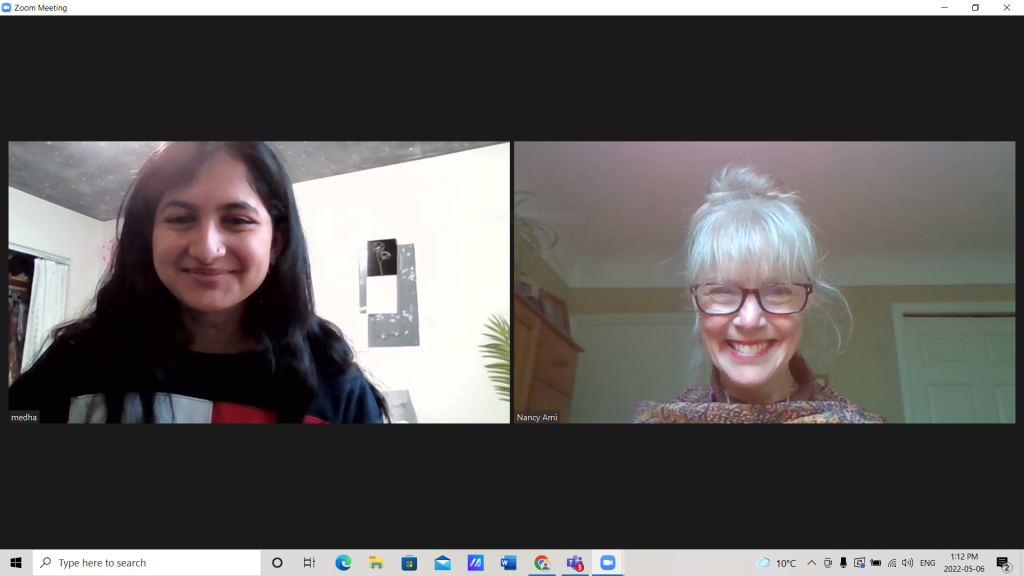“While we struggled with the available technology, the technology itself changed, and a more robust learning management system was adopted. Navigating the new LMS required training, self-study, and time. Resources created for the former platform needed to be recreated using new tools. I felt perpetually inept, lacking confidence to navigate the ever-changing technology. Despite the challenges, I have learned resiliency, drawing strength from from colleagues and students. My artifact is a beautiful, hand-woven silk scarf, a precious gift from a student with whom I met for weekly zoom appts beginning in fall 2020.” – Nancy Ami

Medha and Nancy have regularly met in Zoom since September 2020.
I remember setting up my laptop on a TV stand in my bedroom and trying to meet with students in Zoom. Our internet connection was unreliable in that corner of the house. Images would freeze and sound would falter. Moving the laptop from the stand to the window sill seemed to strengthen connectivity, but on one occasion, I tipped my cup, pouring water onto the keyboard. After mopping up the water and drying off the keyboard, I found that the “h” key had jammed. Typos now characterized my written communication.
Speaking to colleagues on the phone, meeting with students in Zoom (even with Zoom robot voices and frozen images), and focusing on “non screen” beauty of nature anchored me. Relationships, represented by this multi-textured silk scarf with its unbreakable natural fibers and bright hues, remain solid and bright, connections strong despite internet lapses.

The scarf, with its hues of vivid blue, gold, pink, and auburn, contrasts with the gray coldness of the keyboard.

Teaching strategies
Prior to the pandemic, I was mindful of limited time during student appointments. I would ask students briefly about their day and then address the task at hand: “What brings you into the CAC today?” My next focus would be on hurriedly disseminating my writing instruction/feedback or covering as many questions as I could.
During the pandemic, I needed a different approach. I drew on pedagogy likened to the “slow food” movement: “slow teaching”, teaching and learning founded on slower, learner-centred, values-focused approaches. When meeting students in zoom, I explored how they were, how learning online was going, and how their assignments were progressing (or not). I focused on the learners’ context in the moment: “How are you feeling about your writing today?” and “What is working well so far?” I would then inch them ahead, often drawing on knowledge they had but not yet applied: “What are you ready to do next?” and “What have you already done that you can use going forward?” We would chat about their needs, share “one-stop-shop” writing resource hubs, and draw on previous learning: “What do you have at your fingertips to address X?” Fronting relationships and focusing on incremental next steps in the writing process enhanced students’ progress and revived my passion for teaching.

Nancy Ami
In my work as manager at the Centre for Academic Communication, I liaise with university partners, oversee day-to-day operations, collaborate with colleagues, and support students through individual appointments, workshops, and events. Despite my struggles with technology, I am now more comfortable navigating teaching online, a silver lining to working remotely.